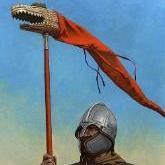When the World Stopped Making Sense - Миграционная эпоха 476-700 гг. н. э.
Лучшие авторы в этой теме
-

Канцлер Шольц 17 сообщений
-

Флавий Аниций 4 сообщений
-
Symmachus 1 сообщение
-

Драконарий 1 сообщение
Популярные дни
Популярные сообщения

Канцлер Шольц
When the World Stopped Making Sense - A Migrational Era Mod for CK3 - 476-700 AD When the World Stopped Making Sense (WtWSMS) - это масштабный капитальный проект для CK2, позволяющий играт

Канцлер Шольц
Сделал машинный перевод мода. Закинул в шапку

Флавий Аниций
Мод для второй части тоже был долгостроем. Его лет 7 или 8 пилили. Впрочем, он был очень крутым, думаю этот будет не хуже. Вероятно, причина такой низкой скорости в том, что мод делается всего од

Канцлер Шольц
Возможно, людей у них на порядок меньше, чем в ЕК2.

Канцлер Шольц
Основная проблема мода это пиар, реклама. Людей отталкивает длинное название мода, которое никак не раскрывает содержимое мода. Группа дискорд очень слабая, там всего 1200 человек. И это группа одна д

Канцлер Шольц
Кстати,возможно и это мод тоже возьмем на перевод. В перерывах с ЕК2,переводить этот мод)

Канцлер Шольц
Как то медленно идет этот прогресс. На гитхаб не очень активная работа, а про обновления в стиме я молчу.

Канцлер Шольц
Пост 1.9.* Обновление статуса Прошло некоторое время, так что вот обновление статуса; не настоящий DD, потому что не так много контента для обсуждения. Май оказался ужасным месяцем дл
-
Сейчас на странице 0 пользователей
- Нет пользователей, просматривающих эту страницу
Рекомендованные сообщения
Присоединиться к обсуждению
Вы можете оставить комментарий уже сейчас, а зарегистрироваться позже! Если у вас уже есть аккаунт, войдите, чтобы оставить сообщение через него.